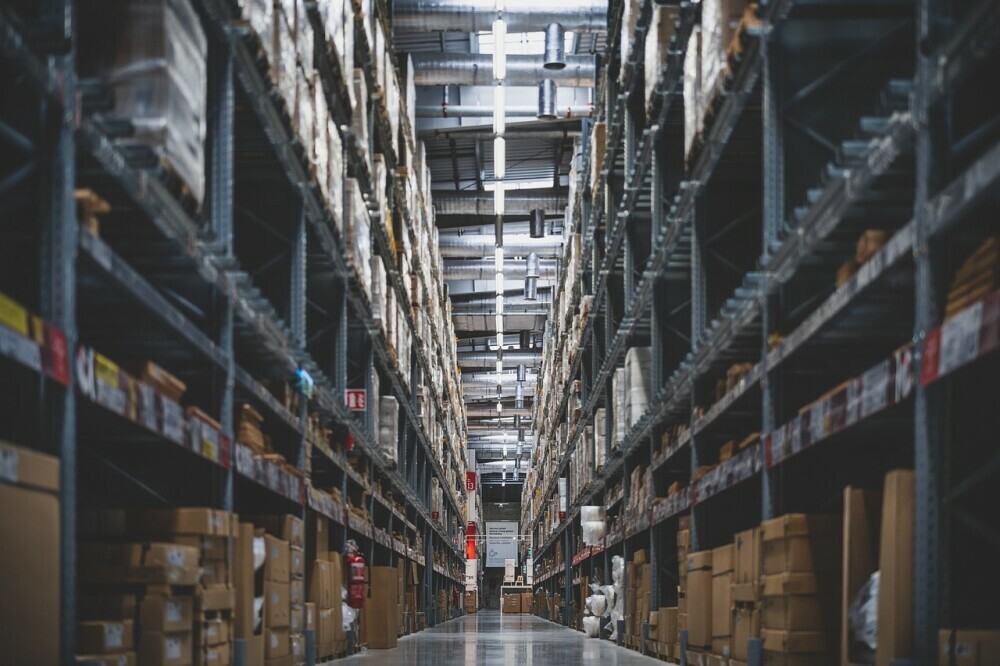Introduction to Dropshipping: Basics and Benefits

Definition and Overview of Dropshipping
Dropshipping is an e-commerce business model where online retailers sell products without holding physical inventory. Instead, when a retailer receives an order, they purchase the item from a third-party supplier who ships it directly to the customer. The retailer earns a profit by marking up the price of the product. This model allows entrepreneurs to start an online store without the need for significant upfront investment in inventory.
Benefits for New and Experienced Entrepreneurs
Dropshipping offers numerous benefits, making it appealing for both new and experienced entrepreneurs. For newcomers, the low entry barrier is a significant advantage. There’s no need to invest heavily in inventory or warehousing, which reduces financial risk. Additionally, dropshipping allows entrepreneurs to offer a wide range of products without worrying about storage limitations.
For experienced business owners, dropshipping provides an opportunity to expand product lines quickly and efficiently. It also allows them to test new markets and niches without significant financial commitment. The flexibility of the dropshipping model enables entrepreneurs to scale their businesses with relative ease.
The Role of Shipping and Fulfillment in Dropshipping Success
While dropshipping offers many advantages, success in this business model heavily depends on efficient shipping and fulfillment. Shipping times, costs, and reliability are critical factors that can influence customer satisfaction and retention. Effective fulfillment processes ensure that orders are processed quickly and accurately, minimizing delays and errors. Therefore, understanding and optimizing shipping and fulfillment strategies is crucial for any dropshipping business aiming for long-term success.
Key Components of Shipping in Dropshipping
Understanding Shipping Options and Methods
In dropshipping, shipping options and methods vary depending on the supplier’s location, the product type, and the target market. Common shipping methods include standard shipping, expedited shipping, and express shipping. Standard shipping is often the most cost-effective but may have longer delivery times. Expedited and express shipping options offer faster delivery at a higher cost.
Dropshippers must also consider international shipping if they target global markets. This involves understanding customs regulations, taxes, and duties that can affect delivery times and costs. Offering multiple shipping options can cater to different customer preferences and improve the overall shopping experience.
The Importance of Shipping Times and Costs
Shipping times and costs are critical components of the customer experience. In the age of instant gratification, customers expect fast and affordable shipping. If shipping times are too long or costs are too high, customers may abandon their carts or choose competitors with better shipping options.
Dropshippers should strive to balance shipping speed and cost-effectiveness. Working with suppliers who can offer reasonable shipping times at competitive rates is essential. Additionally, transparent communication about shipping times and costs during the checkout process helps manage customer expectations and reduces the likelihood of complaints.
How to Choose Reliable Shipping Partners and Suppliers
Choosing reliable shipping partners and suppliers is vital for ensuring smooth and efficient fulfillment. Dropshippers should vet potential suppliers carefully, considering factors such as shipping times, reliability, and cost. Reading reviews, asking for references, and conducting small test orders can help assess a supplier’s performance.
Additionally, dropshippers may work with multiple suppliers to mitigate risks. Diversifying suppliers ensures that if one encounters issues, the business can still fulfill orders. Establishing strong relationships with suppliers and shipping partners can lead to better service and potential cost savings over time.
Fulfillment Strategies: Picking the Right Model

Different Fulfillment Strategies for Dropshipping Businesses
Several fulfillment strategies can be employed in dropshipping, each with its own set of advantages and challenges. The most common models include:
- Direct Fulfillment: The supplier ships products directly to the customer. This is the traditional dropshipping model, where the retailer acts as an intermediary between the customer and the supplier.
- Third-Party Fulfillment: A third-party logistics (3PL) provider handles the storage, packing, and shipping of products. This model is useful for businesses that want to outsource their fulfillment process entirely.
- Hybrid Fulfillment: This model combines direct fulfillment and third-party fulfillment. Retailers may choose to stock fast-moving items in their own warehouse while dropshipping other products from suppliers.
Advantages and Disadvantages of Each Fulfillment Model
Each fulfillment model has its own set of advantages and disadvantages:
- Direct Fulfillment: This model requires minimal investment and allows for a broad product range. However, it offers less control over the fulfillment process, which can lead to inconsistencies in shipping times and quality.
- Third-Party Fulfillment: Outsourcing fulfillment to a 3PL can improve shipping times and allow for better inventory management. However, it comes with added costs and requires careful selection of a reliable 3PL partner.
- Hybrid Fulfillment: This model offers greater flexibility and control over fulfillment. It allows businesses to optimize shipping times and costs for different products. However, managing a hybrid model can be complex and may require advanced logistics systems.
Technology and Tools to Streamline Fulfillment Processes
Leveraging technology is essential for streamlining fulfillment processes in dropshipping. Inventory management software, order tracking systems, and automated communication tools can help ensure that orders are processed quickly and accurately. Integrating these tools with e-commerce platforms allows for real-time updates on order status, reducing the risk of errors and improving customer satisfaction.
Moreover, adopting a centralized dashboard that tracks orders from multiple suppliers can simplify the fulfillment process. This enables dropshippers to monitor shipments, manage returns, and handle customer inquiries more efficiently.
Challenges and Solutions in Shipping and Fulfillment
Common Shipping and Fulfillment Issues Dropshippers Face
Dropshippers often encounter several challenges in shipping and fulfillment, including:
- Long Shipping Times: Sourcing products from overseas suppliers can result in extended delivery times, leading to customer dissatisfaction.
- High Shipping Costs: Depending on the supplier’s location and shipping method, costs can be prohibitively high, eating into profit margins.
- Supply Chain Disruptions: Delays in production, shipping, or customs can disrupt the fulfillment process, resulting in late deliveries.
- Inaccurate Tracking Information: Inconsistent or inaccurate tracking can lead to confusion and frustration for customers.
Effective Solutions and Best Practices
To address these challenges, dropshippers can adopt the following solutions and best practices:
- Supplier Vetting: Carefully select suppliers based on their reliability, shipping times, and cost-effectiveness. Building strong relationships with suppliers can also lead to better service.
- Multiple Shipping Options: Offer various shipping methods to cater to different customer needs. This can include expedited shipping for customers willing to pay a premium for faster delivery.
- Transparent Communication: Keep customers informed about shipping times, costs, and tracking information. Transparency reduces the likelihood of complaints and improves customer trust.
- Inventory Buffer: Maintain a small inventory of fast-moving products to ensure quick fulfillment and reduce reliance on suppliers with long lead times.
Real-Life Examples and Case Studies
For instance, a dropshipping store specializing in electronics faced challenges with long shipping times due to sourcing products from China. By partnering with a 3PL provider in the United States for fast-moving items, the store reduced delivery times significantly, leading to higher customer satisfaction and repeat purchases.
Another example involves a fashion dropshipper who experienced high shipping costs when delivering to international customers. By negotiating bulk shipping rates with their supplier and offering free shipping for orders above a certain amount, they were able to lower costs and increase order volumes.
Future Trends in Shipping and Fulfillment for Dropshipping
Emerging Trends and Innovations in Shipping Technology
The shipping and fulfillment landscape is constantly evolving, with new technologies and innovations shaping the future of dropshipping. Some emerging trends include:
- Automation and AI: Automation tools and artificial intelligence (AI) are being used to optimize supply chains, predict demand, and manage inventory more efficiently. AI can also enhance customer service by providing real-time order tracking and handling inquiries.
- Sustainability: As consumers become more environmentally conscious, sustainable shipping practices, such as using eco-friendly packaging and carbon-neutral shipping, are gaining traction.
- Drones and Autonomous Vehicles: The use of drones and autonomous vehicles for last-mile delivery is an emerging trend that could significantly reduce shipping times and costs in the future.
The Impact of Consumer Expectations on Shipping Standards
Consumer expectations are continuously rising, particularly regarding shipping speed and convenience. The “Amazon effect” has led customers to expect fast, often free, shipping as a standard. Dropshippers must adapt to these expectations by offering competitive shipping options, even if it means absorbing some of the costs.
To meet these demands, dropshippers may need to partner with local suppliers or 3PL providers who can offer faster delivery. Additionally, providing excellent customer service and transparent communication can help mitigate the impact of longer shipping times.
How to Stay Ahead of the Competition in the Evolving Landscape
To stay ahead of the competition, dropshippers should focus on continuous improvement in their shipping and fulfillment processes. This includes:
- Regularly Reviewing Supplier Performance: Continuously assess suppliers’ performance in terms of shipping times, costs, and reliability. Switching to better-performing suppliers can lead to significant improvements in customer satisfaction.
- Adopting New Technologies: Embrace new technologies that can streamline fulfillment, reduce errors, and enhance the customer experience. Staying updated with industry trends will help businesses maintain a competitive edge.
- Focusing on Customer Experience: Beyond shipping speed, prioritize overall customer experience by offering responsive customer service, easy returns, and personalized shopping experiences.
Conclusion
Understanding and optimizing shipping and fulfillment in dropshipping is crucial for success. By selecting the right shipping methods, partners, and fulfillment strategies, dropshippers can enhance customer satisfaction, reduce costs, and stay competitive in an ever-evolving market.
If you want to give dropshipping a try then Shopify is one of the best platforms to get started with. It has all the tools you need plus loads of support to help you make a success. Get started with a 3 day free trial by clicking here. I am an affiliate for Shopify and if you decide to purchase a paid plan I will receive a small commission at no extra cost to you!
Let us know your experiences with dropshipping in the comments below.
All the best
Tony
Not a fan of Dropshipping? Maybe Affiliate Marketing is more your thing! To learn how to become a successful affiliate marketer then you need to join Wealthy Affiliate. Click the banner below to get started TODAY…..
I am an affiliate for Wealthy Affiliate. If you purchase a membership through my link I will make a small commission at no extra cost to you. Read my review of Wealthy Affiliate here.

Hi, my name is Tony and I’m the founder of Free From The Boss. I have been involved in affiliate marketing for a few years now and have made a success out of building online businesses. My aim with this website is to help you build and grow a successful online business for yourself and break free from your boss!


